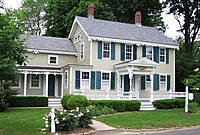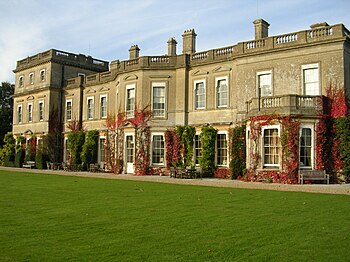Residential real estate
The legal arrangement for the right to occupy a dwelling in some countries is known as the
housing tenure. Types of housing tenure include
owner occupancy,
Tenancy,
housing cooperative,
condominiums (individually parceled properties in a single building),
public housing,
squatting, and
cohousing. The occupants of a residence constitute a
household.
Residences can be classified by, if, and how they are connected to
neighboring residences and land. Different types of housing tenure can
be used for the same physical type. For example, connected residents
might be owned by a single entity and leased out, or owned separately
with an agreement covering the relationship between units and common
areas and concerns.

'Single-family detached home'
- Major categories in North America and Europe
- Attached / multi-unit dwellings
- Apartment
- An individual unit in a multi-unit building. The boundaries of the
apartment are generally defined by a perimeter of locked or lockable
doors. Often seen in multi-story apartment buildings.
- Multi-family house - Often seen in multi-story detached buildings, where each floor is a separate apartment or unit.
- Terraced house (a.k.a. townhouse or rowhouse) - A number of single or multi-unit buildings in a continuous row with shared walls and no intervening space.
- Condominium
- Building or complex, similar to apartments, owned by individuals.
Common grounds and common areas within the complex are owned and shared
jointly. There are townhouse or rowhouse style condominiums as well.
- Cooperative
(a.k.a. co-op) - A type of multiple ownership in which the residents of
a multi-unit housing complex own shares in the cooperative corporation
that owns the property, giving each resident the right to occupy a
specific apartment or unit.
- Semi-detached dwellings (in UK, a 'semi' is by definition two units with a party wall).
- Duplex - Two units with one shared wall. (in UK, a duplex is an apartment on more than one storey)
- Single-family detached home
- Portable dwellings
- Mobile homes - Potentially a full-time residence which can be (might not in practice be) movable on wheels.
- Houseboats - A floating home
- Tents - Usually very temporary, with roof and walls consisting only of fabric-like material.
The size of an apartment or house can be described in square feet or
meters. In the United States, this includes the area of "living space",
excluding the garage and other non-living spaces. The "square meters"
figure of a house in Europe may report the total area of the walls
enclosing the home, thus including any attached garage and non-living
spaces, which makes it important to inquire what kind of surface
definition has been used.
It can be described more roughly by the number of rooms. A
studio apartment
has a single bedroom with no living room (possibly a separate kitchen).
A one-bedroom apartment has a living or dining room separate from the
bedroom. Two bedroom, three bedroom, and larger units are common. (A
bedroom is defined as a room with a closet for clothes storage.)
- Major categories in India and the Asian Subcontinent
The size is measured in Gaz (square yards), Quila, Marla, Beegha, and acre.
See
List of house types for a complete listing of housing types and layouts,
real estate trends for shifts in the market and
house or
home for more general information.


